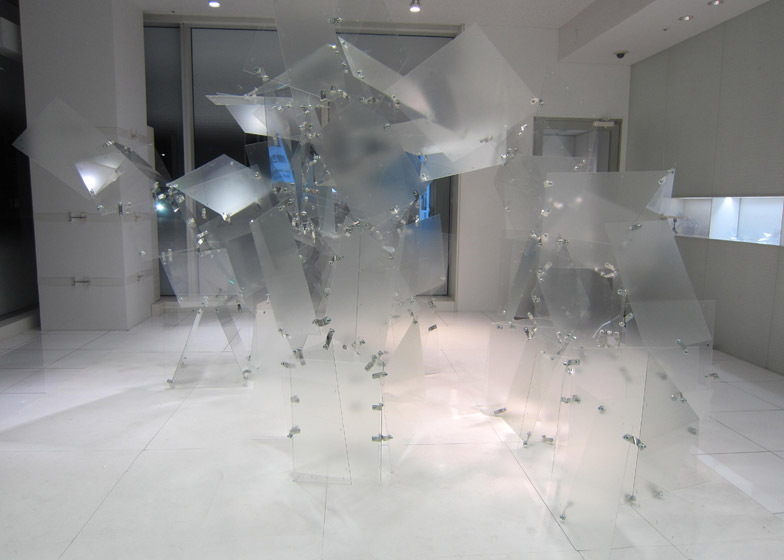A group of students has completed a pair of transparent sculptural pavilions with the type of glass often used to cover smartphones (+ slideshow).
The two experimental pieces were created as part of a workshop taught by architect Beverly Choe, from Stanford University, and structural engineer Jun Sato, from the University of Tokyo. The group brought together students from the two institutions and Keio University.
Working with materials provided by Asahi Glass Company, the students experimented with two different brands of chemically-strengthened glass: Leoflex and Dragontrail.
Leoflex is often used in architectural applications as it is both lightweight and flexible, while Dragontrail is favoured by major electronics brands around the world as screens for smartphones and tablets.
"The class sought to expand our ideas of what glass could do, both structurally and spatially," explained Choe in a statement.
The students connected large panels of the glass together with a system of aluminium straps and rubber washers, using several layers to create a vault-shaped space.
"We used three different transparencies of glass (by applying film) to create a visually 'fluctuating' space, which would change depending on the light conditions, and 'dissolve' into nature/the campus," added Choe.
Entitled Transparent Structures I, the first pavilion was installed in the Engineering Quad at Stanford University in March. Situated on the grass, the structure's panels were lit up from within to highlight the qualities of the two materials' different opacities.
The second structure, Transparent Structures II, was featured at the Asahi Glass Company storefront in Tokyo, in June.
Other designers are also experimenting with new uses of glass. Japanese design studio Nendo partnered with glass specialists for a new collection of tables, while Japanese architect Hiroshi Nakamura played with the material's transparency when designing a shimmering glass-brick facade for a house in Hiroshima.
Spanish designer Patricia Urquiola overcame her hatred of the material this year to design a collection of transparent furniture and to pattern a range of architectural glass.
Photography is by Nick Xu.






